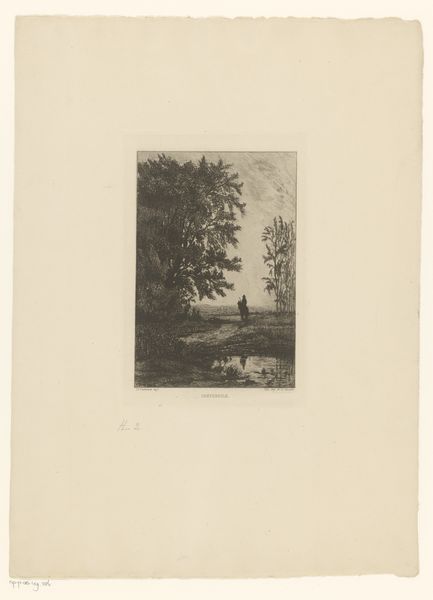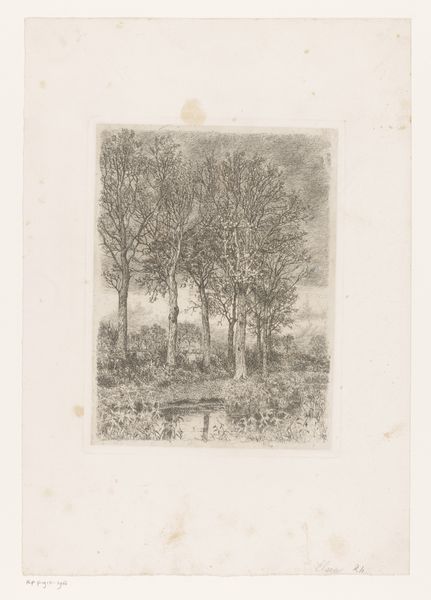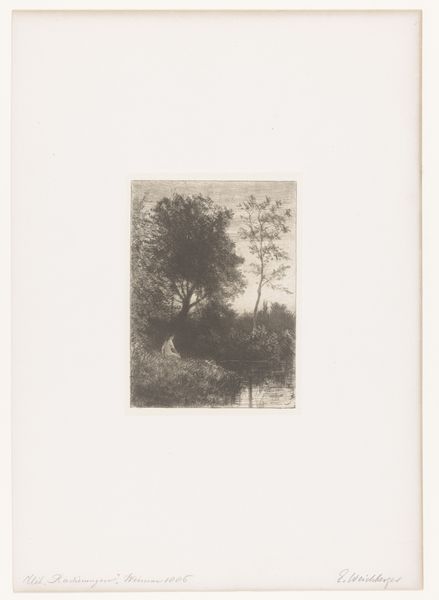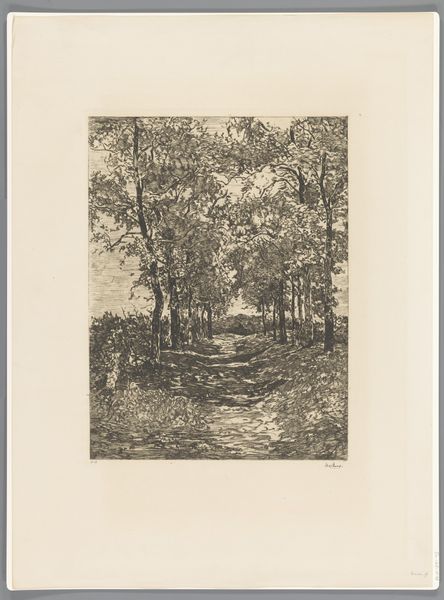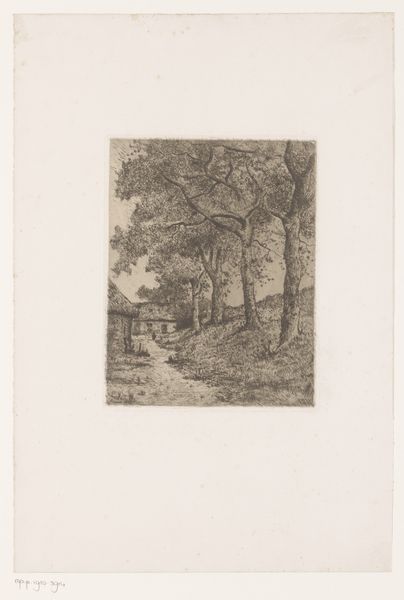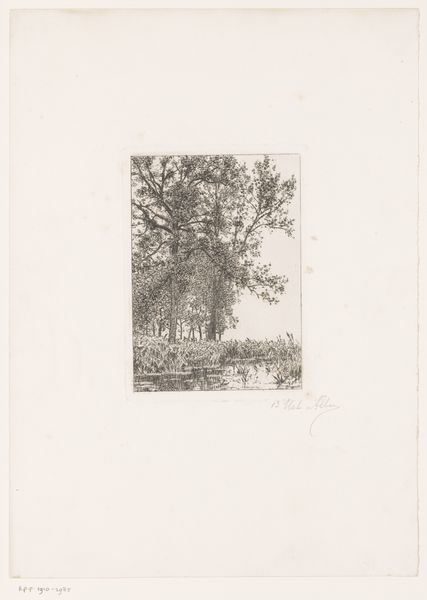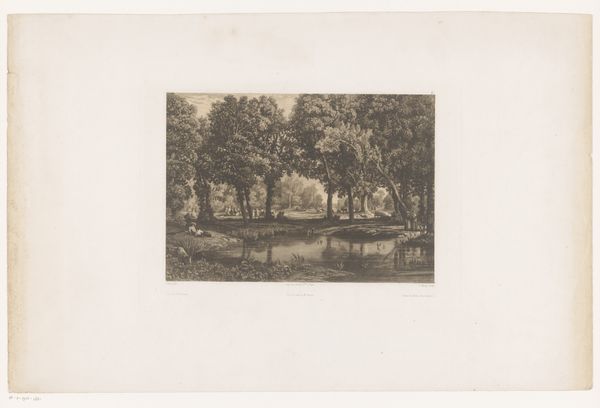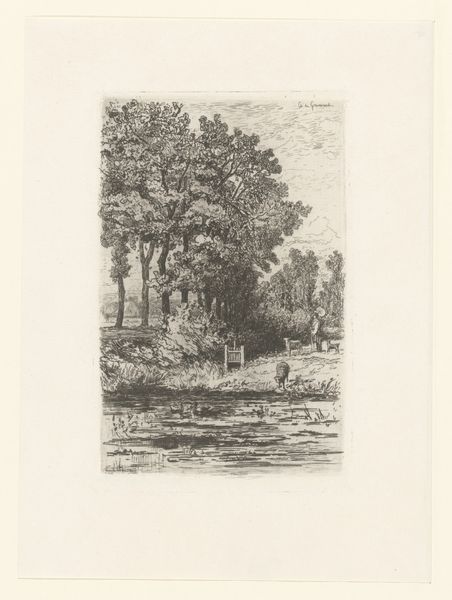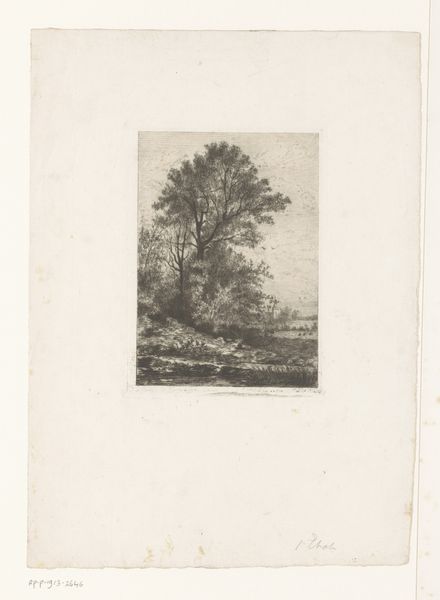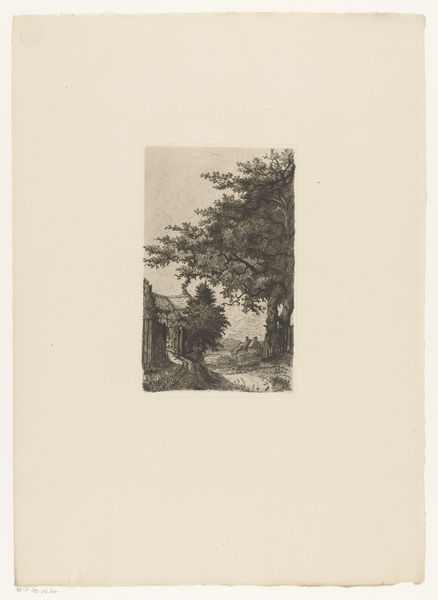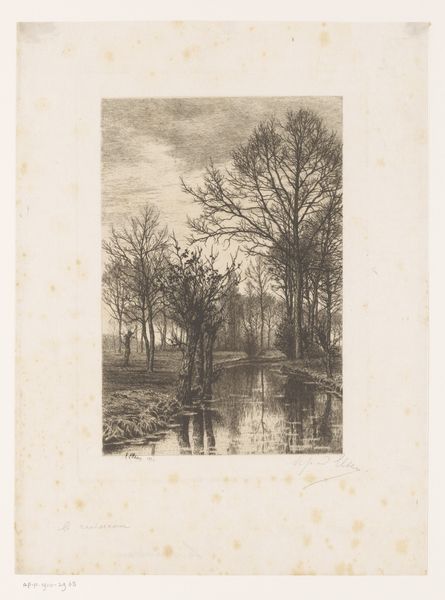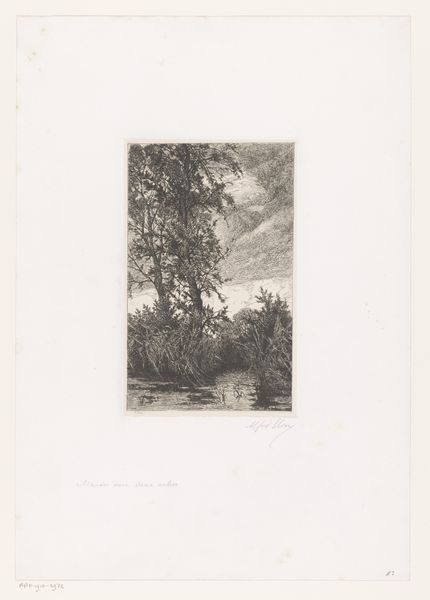
drawing, plein-air, paper, pencil
#
pencil drawn
#
drawing
#
plein-air
#
pencil sketch
#
landscape
#
paper
#
forest
#
romanticism
#
pencil
#
pencil work
Dimensions: height 124 mm, width 176 mm
Copyright: Rijks Museum: Open Domain
Curator: This pencil drawing is entitled "Bosgezicht met water te Haarlem," which translates to "Wooded Landscape with Water at Haarlem." It was created by Pieter George Westenberg sometime between 1801 and 1873, and it’s currently held in the Rijksmuseum. Editor: Immediately, the subdued palette gives me a sense of tranquility. The artist has really captured the stillness of this Haarlem landscape, there’s such a calm resonating. Curator: It's interesting to consider this piece within the broader context of 19th-century Romanticism. We often associate Romanticism with dramatic, sublime landscapes, but here, Westenberg offers a more intimate and subdued portrayal of nature. How might we read this choice within the socio-political landscape of the time? Was there a yearning for quietude and retreat from the burgeoning industrial world? Editor: Precisely! Think about how landscape art was utilized by the privileged at the time. What did it mean for landscape paintings to mostly depict scenes free from evidence of labour when so many at the time worked that very land? Is Westenberg depicting this landscape or simply making a pretty picture in avoidance? The composition almost reads as an exclusive, private place. Curator: Absolutely. Furthermore, examining the work through a feminist lens might raise questions about the representation of women within this idyllic scene. The absence of female figures could be interpreted in various ways, reflecting prevailing social norms regarding women's roles and their relationship to nature and public space. Editor: Or consider how class affects accessibility to “nature.” The figure, barely there, walking on the shaded trail, brings me to think about who has the time and safety to go off wandering into nature. This makes me consider more deeply my initial response, a supposed calm, I’m now wondering, who does this landscape cater to, who does it omit, and does that truly create peace? Curator: These are invaluable points to consider. The museum’s role then becomes one of critically examining these historical blind spots. Works like these become pivotal sites to interrogate the politics of imagery and its intersectional social impact. Editor: It makes you consider the complex, often unspoken narratives embedded within these seemingly quiet landscapes, reminding us of the power art has to reflect—and also to conceal—historical truths. Curator: I find myself appreciating the nuanced layers of meaning contained within what initially appeared as a simple woodland scene.
Comments
No comments
Be the first to comment and join the conversation on the ultimate creative platform.
